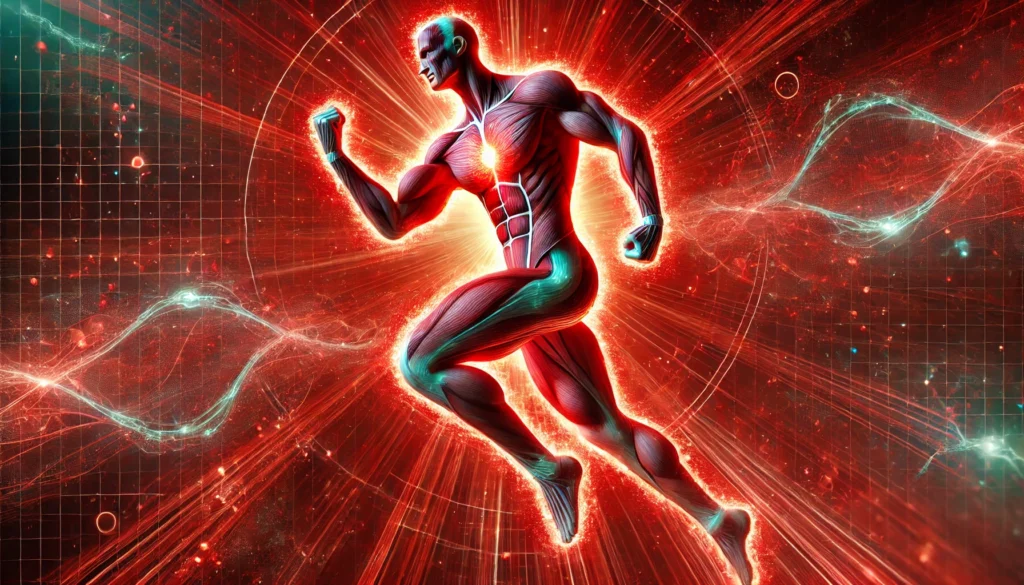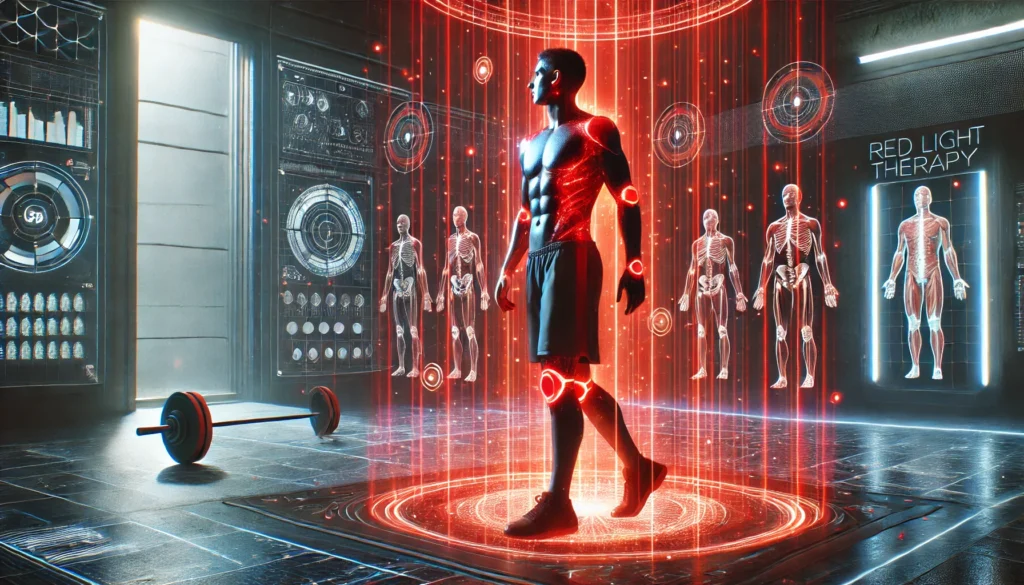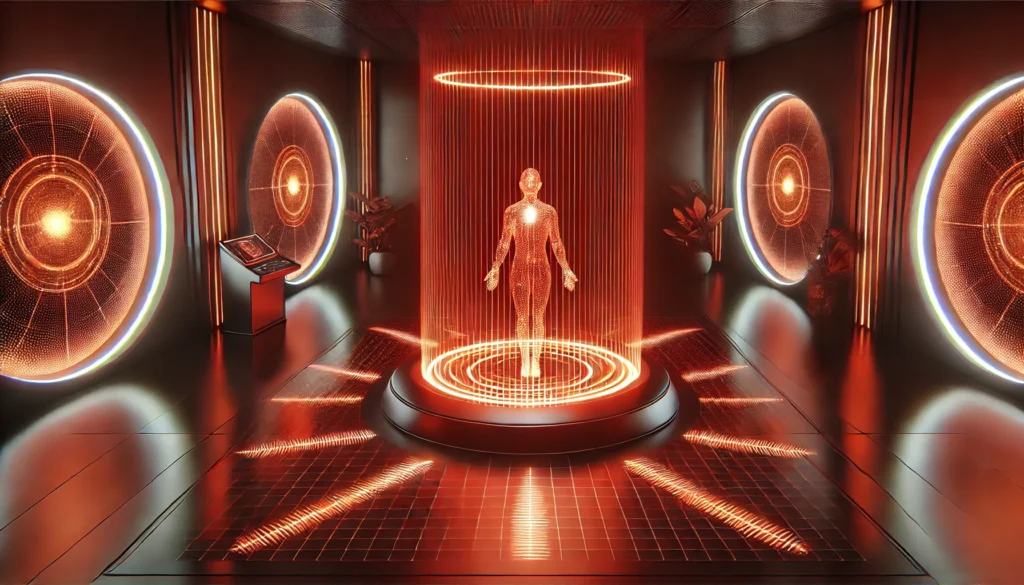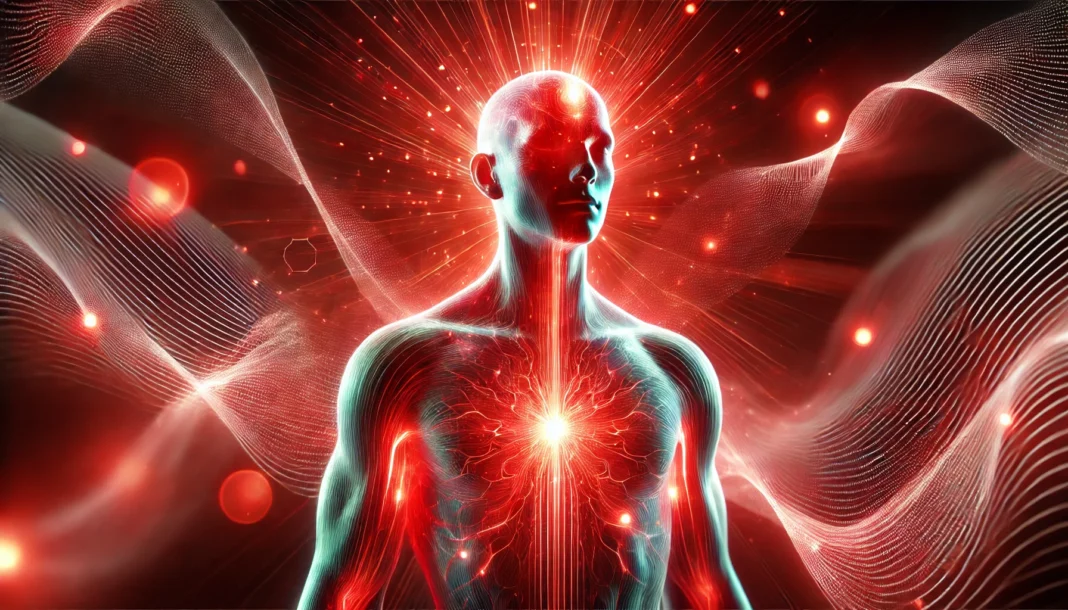Understanding Red Light Therapy and Its Benefits
Red light therapy has gained significant attention in recent years for its diverse applications in skin care, recovery, and performance enhancement. This non-invasive treatment harnesses low-wavelength red light to penetrate the skin, stimulating cellular activity and promoting healing. Originally developed by NASA to aid plant growth in space, red light therapy is now widely used in dermatology and sports medicine. Among its many benefits, red light therapy has shown remarkable efficacy in treating acne scars, reducing inflammation, and accelerating muscle recovery. For athletes looking to optimize performance while maintaining clear skin, this therapy presents a compelling, scientifically-backed solution.
You may also like: Red Light Therapy for Muscle Recovery: How Athletes Can Speed Healing and Enhance Performance
The effectiveness of red light therapy lies in its ability to enhance mitochondrial function in cells. Mitochondria, often referred to as the powerhouses of the cell, produce adenosine triphosphate (ATP), the essential energy currency that fuels biological processes. When red light penetrates the skin, it stimulates mitochondrial activity, leading to increased ATP production, improved cellular repair, and enhanced tissue regeneration. This mechanism explains why red light therapy is particularly beneficial for individuals seeking both skin rejuvenation and post-exercise recovery. Whether addressing acne scars or muscle fatigue, the treatment’s impact on cellular metabolism provides a strong foundation for its widespread use.
Red Light Therapy for Acne Scars: The Science Behind Its Effectiveness
Acne scars can be persistent and difficult to treat, often requiring months or even years to fade. Traditional treatments such as chemical peels, laser therapy, and microneedling may help, but they often come with risks, discomfort, and long recovery times. In contrast, red light therapy offers a gentle yet effective alternative that promotes skin repair without irritation. But does acne light therapy really work? Research suggests that red light therapy significantly improves acne scars by reducing inflammation, boosting collagen production, and enhancing blood circulation in the skin.
One of the primary reasons acne scars linger is due to insufficient collagen production during the healing process. Collagen is a crucial structural protein that gives skin its strength and elasticity. When acne lesions damage the deeper layers of the skin, collagen synthesis becomes disrupted, leading to depressed or raised scars. Red light therapy stimulates fibroblast activity, the cells responsible for collagen production, helping to smooth out scarred areas and restore an even skin texture. Studies have shown that consistent use of red light therapy over several weeks leads to noticeable improvements in skin tone and scar visibility.
Additionally, red light therapy reduces inflammation, a critical factor in both active acne and residual scarring. Chronic inflammation can prolong the healing process, making scars more pronounced. By reducing pro-inflammatory cytokines and enhancing antioxidant defenses, red light therapy accelerates the resolution of post-inflammatory hyperpigmentation (PIH) and improves overall skin clarity. The ability to address both acne breakouts and residual scars makes red light therapy an appealing option for athletes who experience skin flare-ups due to sweat, friction, and environmental stressors.
Enhancing Athletic Recovery with Red Light Therapy
Beyond its skin-healing properties, red light therapy is an invaluable tool for athletic recovery. Intense training places significant stress on muscles, tendons, and joints, leading to microscopic tears and inflammation. While this process is essential for muscle growth, excessive soreness and prolonged recovery times can hinder an athlete’s performance. Red light therapy has been extensively studied for its role in accelerating tissue repair, reducing muscle fatigue, and minimizing post-exercise pain.
One of the key benefits of red light therapy in sports recovery is its ability to enhance blood circulation. Improved circulation ensures that oxygen and nutrients are efficiently delivered to damaged tissues, expediting the healing process. This increased blood flow also aids in the removal of metabolic waste products, such as lactic acid, which contribute to muscle soreness. Athletes who incorporate red light therapy into their recovery routines often report reduced downtime between workouts and an overall improvement in training endurance.
Moreover, red light therapy has been shown to modulate oxidative stress, a major contributor to muscle fatigue. During intense physical exertion, the production of reactive oxygen species (ROS) increases, leading to cellular damage and inflammation. While some oxidative stress is necessary for adaptation, excessive levels can impair performance and prolong recovery. By activating antioxidant pathways and reducing oxidative damage, red light therapy helps maintain muscle integrity and resilience, allowing athletes to push their limits without compromising long-term health.

Performance Enhancement: The Role of Red Light Therapy in Athletic Optimization
While recovery is essential, maximizing performance is equally important for athletes striving to reach peak levels. Red light therapy offers a unique advantage by enhancing muscle function, increasing endurance, and improving overall physiological efficiency. Studies have demonstrated that pre-exercise application of red light therapy leads to increased muscle strength, greater power output, and improved neuromuscular coordination.
One of the mechanisms behind these performance benefits is the stimulation of nitric oxide (NO) production. Nitric oxide is a vasodilator that relaxes blood vessels, increasing blood flow to muscles and improving oxygen delivery. Enhanced oxygenation translates to greater stamina, reduced perceived exertion, and delayed onset of muscle fatigue. This effect is particularly beneficial for endurance athletes, such as runners, cyclists, and swimmers, who rely on sustained energy output.
Furthermore, red light therapy has been linked to improved muscle contraction efficiency. By optimizing mitochondrial function and reducing energy deficits, muscles can contract more forcefully and sustain activity for longer durations. This enhancement in muscular performance is not only advantageous for competitive athletes but also for individuals engaging in regular strength training or high-intensity interval workouts. The ability to train harder with less fatigue positions red light therapy as a game-changer in sports performance optimization.
Red Light Therapy for Aging Faces and Long-Term Skin Health
In addition to its applications in acne treatment and athletic performance, red light therapy is widely recognized for its anti-aging benefits. But is there light therapy for aging faces that truly works? The answer is a resounding yes. By stimulating collagen synthesis, reducing fine lines, and improving skin elasticity, red light therapy helps combat signs of aging while maintaining a youthful complexion.
Over time, factors such as UV exposure, pollution, and lifestyle habits contribute to skin aging. Collagen breakdown leads to wrinkles, sagging, and loss of firmness. Red light therapy counteracts these effects by triggering regenerative processes at the cellular level. Many individuals who incorporate red light therapy into their skincare routines report firmer skin, diminished wrinkles, and an overall brighter complexion.
This dual benefit—addressing both acne scars and age-related skin concerns—makes red light therapy an invaluable tool for individuals who want to maintain clear, healthy skin throughout different life stages. Athletes, in particular, benefit from this skin-rejuvenating effect, as their rigorous training routines often expose them to external stressors that can accelerate aging.
Frequently Asked Questions (FAQ) on Red Light Therapy for Acne Scars, Athletic Recovery, and Performance Enhancement
1. How does red light therapy specifically help with acne scars? Red light therapy promotes cellular repair and collagen production, both of which are essential for reducing the appearance of acne scars. Unlike traditional acne treatments, which often focus on surface-level exfoliation or chemical interventions, red light therapy penetrates deeply into the skin, stimulating fibroblasts to create new collagen. This process gradually fills in depressions left by acne scars, evening out skin texture over time. Many users report that their red light therapy acne before and after results show a significant reduction in discoloration and scarring. The treatment also helps with blood circulation, ensuring that nutrients reach damaged skin areas more effectively, accelerating the healing process.
2. Is red light good for acne, or does it only work on scars? Red light therapy is beneficial for both active acne and residual scars. It reduces inflammation in active breakouts, minimizing swelling and redness, while also preventing future breakouts by improving skin barrier function. Unlike blue light therapy, which targets acne-causing bacteria, red light therapy pimples treatment works by decreasing sebum production and balancing oil levels. Over time, users often notice fewer flare-ups and improved skin texture. Because red light therapy does not cause dryness or irritation, it is a gentle yet effective option for individuals with sensitive or acne-prone skin.
3. What makes light therapy for acne different from other treatments? One major advantage of light therapy for acne is that it does not rely on topical medications or oral antibiotics, which often come with side effects such as dryness, peeling, or antibiotic resistance. Instead, red light therapy enhances the skin’s natural ability to heal and regenerate. Unlike harsh chemical peels or laser treatments, which may require downtime, red light therapy is non-invasive and suitable for daily use. Users who have struggled with acne and scarring for years often find that incorporating this therapy into their skincare routine leads to long-term improvements. Additionally, this treatment is safe for all skin types, making it a more accessible alternative to aggressive dermatological procedures.

4. Can red light therapy be combined with other acne treatments? Yes, red light therapy can complement other acne treatments, including topical retinoids, salicylic acid, and professional facials. Since it enhances collagen production and reduces inflammation, it can help counteract some of the irritation caused by traditional acne medications. However, users should be cautious about overexposing their skin to multiple treatments at once. Consulting with a dermatologist can help determine the best combination for an individual’s specific needs. For those using chemical exfoliants, spacing out treatments can prevent excessive sensitivity and ensure optimal results.
5. Is there light therapy for aging faces that also helps with acne scars? Yes, red light therapy is widely used for anti-aging purposes in addition to treating acne scars. By stimulating collagen synthesis, this therapy helps reduce fine lines and wrinkles while simultaneously improving skin elasticity. Many individuals looking for an effective is there light therapy for aging faces solution find that red light therapy offers dual benefits—it rejuvenates aging skin while addressing past acne damage. Over time, regular use results in smoother, firmer skin with a more even complexion. The non-invasive nature of this treatment makes it an excellent option for those who want to maintain a youthful appearance without resorting to surgical interventions.
6. How long does it take to see noticeable improvements with red light therapy for acne scars? Results vary depending on the severity of the scars and the consistency of treatment. Most users begin to see subtle improvements within a few weeks, but significant changes typically take two to three months of consistent use. Red light therapy acne before and after comparisons often show that deeper scars require more prolonged treatment, while mild discoloration fades more quickly. The key to success is consistency—using the therapy at least three to five times per week can accelerate results. Combining red light therapy with a well-rounded skincare routine, including hydration and sun protection, further enhances its effectiveness.
7. Can red light therapy be used on other parts of the body besides the face? Absolutely! While many people focus on facial acne scars, red light therapy is also effective for treating body acne and scars on the chest, back, and shoulders. Athletes, in particular, benefit from using light therapy for acne scars on areas prone to friction and sweat buildup. In addition to addressing acne concerns, this therapy promotes faster recovery of minor injuries, bruises, and muscle fatigue. The ability to use red light therapy on various parts of the body makes it a versatile tool for both skincare and athletic recovery.
8. How does red light therapy compare to professional laser treatments for acne scars? While professional laser treatments, such as fractional lasers or CO2 lasers, can deliver dramatic results, they often come with significant downtime and higher costs. Red light therapy offers a more gradual but safer approach to skin rejuvenation. Unlike ablative laser treatments, which remove layers of skin, red light therapy enhances natural healing without causing irritation or excessive redness. Individuals who prefer a non-invasive and cost-effective solution often find red light therapy to be a worthwhile alternative. Additionally, because it carries no risk of hyperpigmentation, it is suitable for a wider range of skin tones.
9. Can red light therapy help prevent future acne breakouts? Yes, red light therapy can play a preventative role in acne management. By regulating oil production, improving skin hydration, and reducing inflammation, it creates a healthier skin environment that is less prone to breakouts. Many users find that incorporating red light therapy into their routine helps maintain clearer skin over time. Unlike some conventional treatments that lose effectiveness with prolonged use, red light therapy continues to support skin health without diminishing returns. For best results, it should be used in conjunction with a well-balanced diet, adequate hydration, and proper skincare habits.
10. Is light therapy safe for daily use, and are there any side effects? Red light therapy is considered one of the safest skin treatments available, with minimal to no side effects. Unlike UV-based therapies, which can cause damage with prolonged exposure, red light therapy is non-ionizing and does not harm the skin. Users can safely incorporate light therapy for acne into their daily skincare routine, provided they follow manufacturer guidelines. Some individuals with very sensitive skin may experience mild redness initially, but this typically subsides quickly. Ensuring proper distance from the light source and gradually increasing session duration can help minimize any potential sensitivity.
Conclusion Red light therapy is revolutionizing acne scar treatment, offering an effective, non-invasive solution for individuals seeking smoother, healthier skin. Whether used for acne scars, active breakouts, or overall skin rejuvenation, this therapy provides lasting benefits without the drawbacks of harsher treatments. Its ability to enhance muscle recovery and performance further underscores its versatility. As more research continues to validate its efficacy, red light therapy is likely to become a staple in both skincare and athletic wellness routines.

Conclusion: Integrating Red Light Therapy for Holistic Health and Performance
Red light therapy is far more than a skincare trend—it is a scientifically validated treatment with profound implications for athletic recovery, performance enhancement, and skin health. Whether used to fade acne scars, accelerate muscle repair, or optimize endurance, this therapy offers a non-invasive, effective solution for individuals striving to look and perform their best.
As research continues to uncover new applications of red light therapy, its role in health and wellness is expected to expand even further. Athletes and fitness enthusiasts who integrate this therapy into their routines can enjoy faster recovery times, enhanced performance, and clear, rejuvenated skin. The versatility of red light therapy positions it as a game-changer in both dermatology and sports science, making it an indispensable tool for those seeking holistic well-being.
red light therapy benefits, best light therapy for acne, red light therapy for sports injuries, muscle recovery therapy, how does red light therapy work, performance-enhancing recovery methods, skincare for athletes, acne scar removal therapy, non-invasive muscle recovery, red light therapy for collagen production, does red light therapy work for acne scars, sports performance optimization, advanced athletic recovery techniques, anti-aging light therapy, skin rejuvenation for athletes, best recovery methods for athletes, red light therapy before and after results, skin health and performance, acne scars healing light therapy, sports therapy and regeneration
Further Reading:
How Red Light Therapy Elevates Athletic Performance
How Red Light Therapy Supports Skin Health, Recovery, and Wellness
Disclaimer
The information contained in this article is provided for general informational purposes only and is not intended to serve as medical, legal, or professional advice. While NewsHealthWatch strives to present accurate, up-to-date, and reliable content, no warranty or guarantee, expressed or implied, is made regarding the completeness, accuracy, or adequacy of the information provided. Readers are strongly advised to seek the guidance of a qualified healthcare provider or other relevant professionals before acting on any information contained in this article. NewsHealthWatch, its authors, editors, and contributors expressly disclaim any liability for any damages, losses, or consequences arising directly or indirectly from the use, interpretation, or reliance on any information presented herein. The views and opinions expressed in this article are those of the author(s) and do not necessarily reflect the official policies or positions of NewsHealthWatch.

